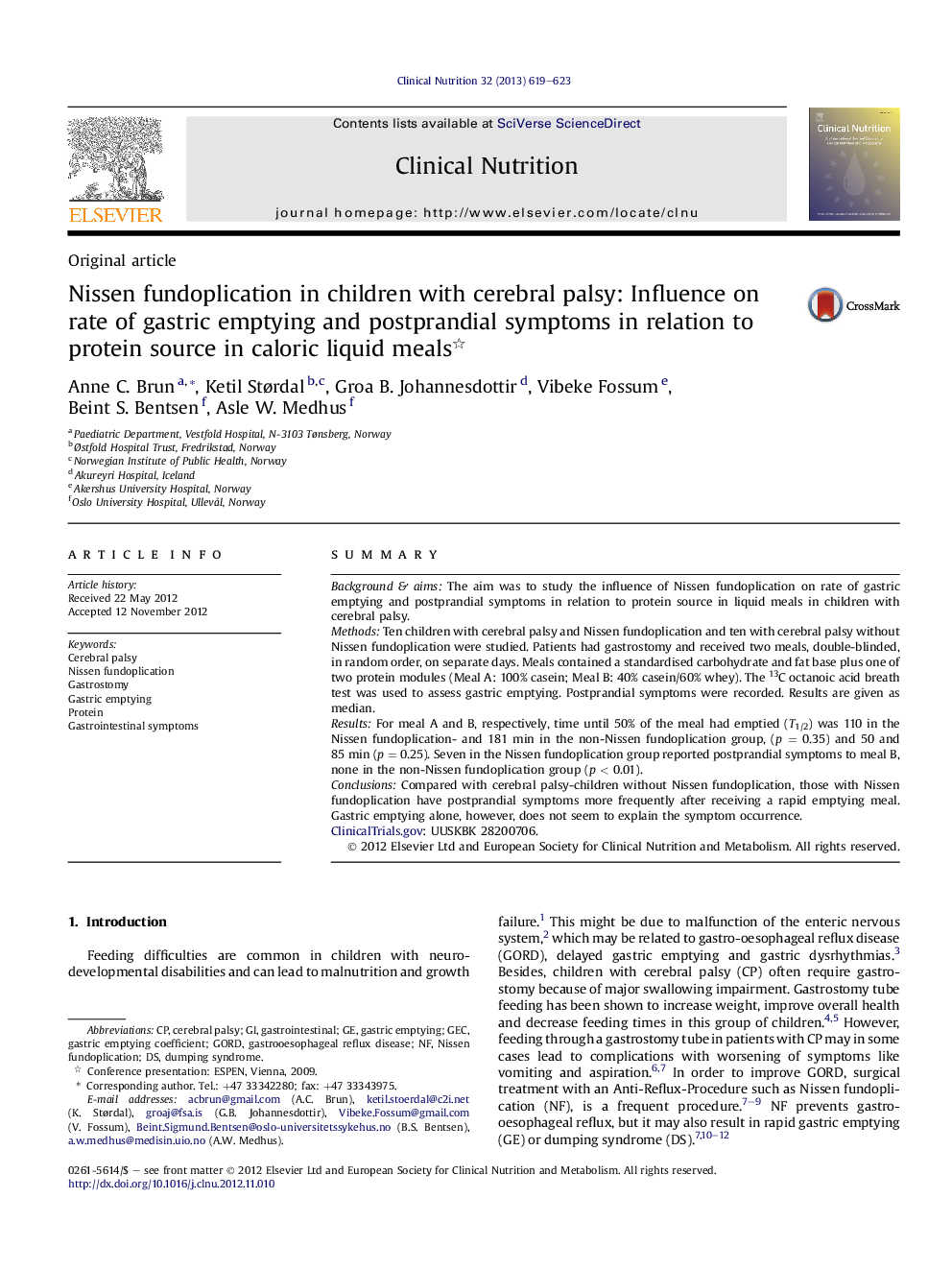| Article ID | Journal | Published Year | Pages | File Type |
|---|---|---|---|---|
| 2684004 | Clinical Nutrition | 2013 | 5 Pages |
SummaryBackground & aimsThe aim was to study the influence of Nissen fundoplication on rate of gastric emptying and postprandial symptoms in relation to protein source in liquid meals in children with cerebral palsy.MethodsTen children with cerebral palsy and Nissen fundoplication and ten with cerebral palsy without Nissen fundoplication were studied. Patients had gastrostomy and received two meals, double-blinded, in random order, on separate days. Meals contained a standardised carbohydrate and fat base plus one of two protein modules (Meal A: 100% casein; Meal B: 40% casein/60% whey). The 13C octanoic acid breath test was used to assess gastric emptying. Postprandial symptoms were recorded. Results are given as median.ResultsFor meal A and B, respectively, time until 50% of the meal had emptied (T1/2) was 110 in the Nissen fundoplication- and 181 min in the non-Nissen fundoplication group, (p = 0.35) and 50 and 85 min (p = 0.25). Seven in the Nissen fundoplication group reported postprandial symptoms to meal B, none in the non-Nissen fundoplication group (p < 0.01).ConclusionsCompared with cerebral palsy-children without Nissen fundoplication, those with Nissen fundoplication have postprandial symptoms more frequently after receiving a rapid emptying meal. Gastric emptying alone, however, does not seem to explain the symptom occurrence.ClinicalTrials.gov: UUSKBK 28200706.
